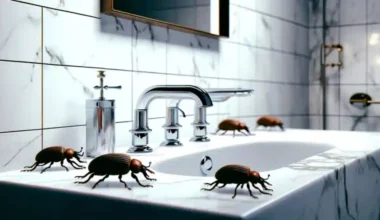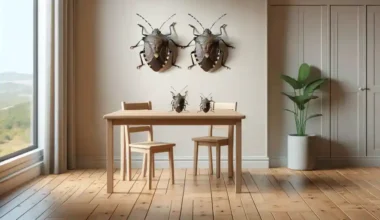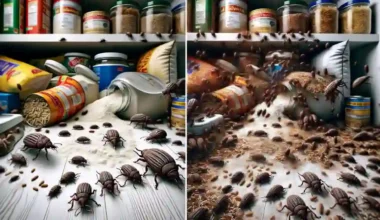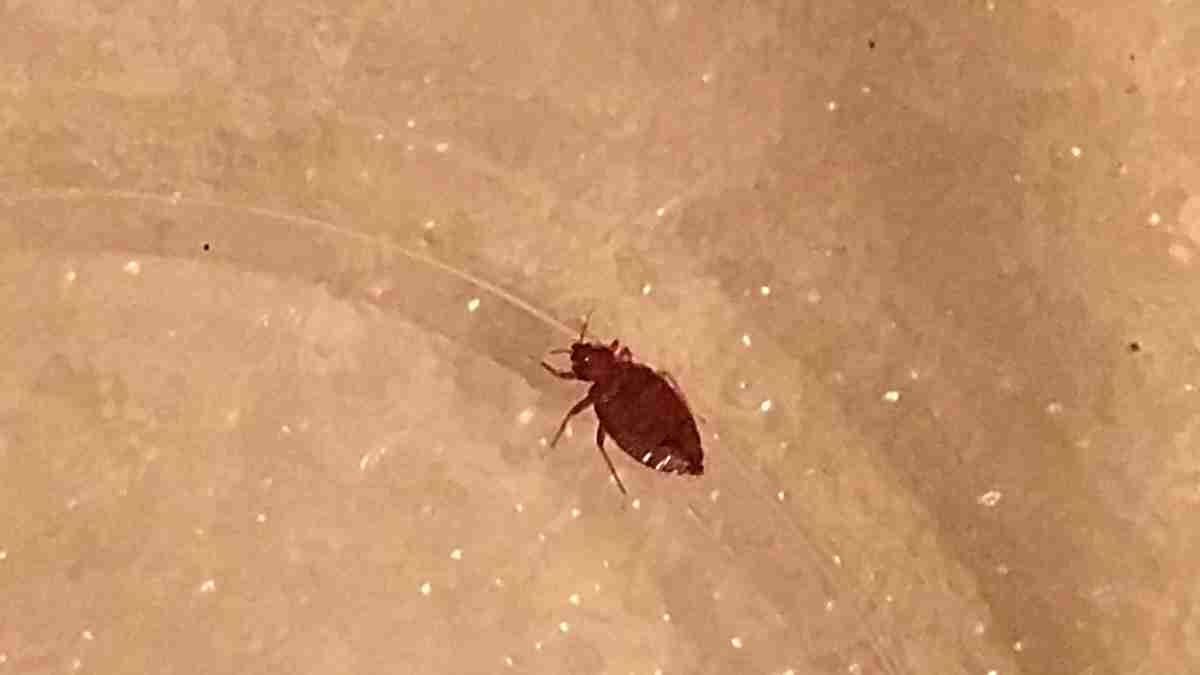I visited someone who has bed bugs, what should do? Did I bring bed bugs to my home? Bed bugs are known for getting into people’s houses and making them uncomfortable and worried. So, if you just visited someone who has bed bugs, you need to take the necessary steps to avoid bringing them into your own home. This detailed tutorial will tell you step-by-step what to do in this kind of situation to reduce the chance of an infestation.
I visited someone who has bed bugs

If you just got home, do these if you visited someone who has bed bugs:
1. Try to identify signs of bed bugs
First of all, it’s important to know what bed insect indications to look for. The length of these tiny, flat, oval-shaped insects is roughly 4-5 mm. Most of the time, they’re out at night, and they can leave clues like:
- Small feces patches that are dark brown or black on sheets, mattresses, or neighboring furnishings
- Eggs or eggshells that are very little and cream-colored.
- Bed bugs shed their skins or exoskeletons as they mature.
- Crushed bed bugs leave red or rust-colored stains on sheets or mattresses.
- Bites on the skin, frequently in a line or group, may be itchy and swelling.
2. Decontaminate before going inside
Once you return from visiting someone who has bed bugs, you should do the following to reduce the chance of getting bed bugs into your own home:
- Don’t sit on furniture or put anything on the floor until you’ve finished the next steps.
- Take off your clothing and put them in a zipped plastic bag. This will keep any bed bugs or eggs from getting out. This keeps them from moving to other places.
- Take a hot shower and pay careful attention to places where bed bugs could hide, like behind your ears, in your hair, or around your waistline.
Make sure to carefully and closely check your body for evidence of bites or bugs.
3. Take care of your own belongings
Bed bugs are known to hitchhike, and your personal belongings are an easy way for these pests to get stuck when you leave the infested home.
So, if you visited someone who has bed bugs, you want to store your things outside or in a closed place like a garage or shed until they can be treated.
Use the highest heat setting feasible to wash and dry any clothes, bedding, and other objects that can be washed. Bed bugs and their eggs will die because of the heat.
If you can’t wash, put your stuff in a dryer set to high heat for at least 30 minutes. On the other hand, you can use a portable warmer made just for treating objects with bed bugs.
Pay particular attention to seams, pockets, and zippers when you vacuum your bags, backpacks, and purses. After using the vacuum, throw away the bag or empty the canister right away, putting the contents in a plastic bag first.
If you can’t wash or heat your items, you might want to use a chemical treatment, like bed bug spray or pesticide dust, and follow the instructions carefully.
4. Inspect your home regularly
Even if you’ve done all the right precautions, it still helps to keep an eye out for bed bugs in your house before stuck eggs on your belongings could bring them into your own home. Generally, bed bug eggs are laid-out in clusters and attached in various small, tight spaces.
Also, if you have a stuck-on pregnant female, that could mean an infestation because a female bed bug can produce between 1-7 eggs per day for about 10 days after a single blood meal. She will then have to feed again to produce more eggs.
Here are some recommendations to help you with the process of inspecting and keeping an eye on things:
- Check your mattress, box spring, and bed frame often for symptoms of bed bugs, such as feces, eggs, and skins that have been shed.
- Use a flashlight to look behind headboards, under furniture, or along baseboards and other dark, concealed places.
- Under the legs of your bed and other furniture, install bed bug interceptors. These gadgets catch bed bugs when they try to climb up or down, so you can keep a better eye on their presence.
- Check other things in your home, like upholstered furniture, curtains, and carpets, for signs of bed bugs.
- Set up glue traps or glue boards in key spots throughout your home to catch any bed bugs that may be wandering.
Bed bugs and their eggs can be killed by washing your sheets, pillowcases, and blankets regularly.
5. Keep potential bed bugs outside
Take the following preventive steps to cut down on the chance of future infestations:
- Be careful while going to houses or places that may have bed bugs, such as hotels, dorms, or shelters.
- Check for symptoms of bed bugs on mattresses, headboards, and other furniture when you stay in a place you don’t know well.
- When you travel, don’t put your bags on the floor or bed. Instead, put them on a baggage rack or a firm surface.
- Keep your home clean and free of clutter to make it harder for bed bugs to hide.
- Put bed bug-proof covers on your mattress and box spring to stop infestations and make bed bug checks easier.
To stop bed bugs from getting in, seal any cracks or fissures in the walls, baseboards, and near electrical outlets.
5. Seek professional advice and assistance
If, despite your best efforts, you think bed bugs have moved into your house, you should talk to a professional exterminator as soon as possible. A professional pest control expert will do a full assessment and make treatment suggestions based on what will work best. Some of these are:
- Chemical treatments, including insecticides or pesticides, are put on specific spots in your house.
- Bed bugs and their eggs can be killed by heat treatments, which involve making the rooms too hot for bed bugs and their eggs to live in.
- Cryonite treatments, which employ very cold to kill bed bugs by freezing them.
- Fumigation is a more active way to get rid of bed bugs that entail closing your home and using a strong poison.
Remember that getting rid of bed bugs in one day may not be possible, especially if you do it yourself, so it may require more than one treatment, and it is very important to follow the exterminator’s instructions for care and monitoring after the treatments.
How likely is it that I brought bed bugs home?
The likelihood of bringing bed bugs home after visiting an infested house depends on various factors, such as the degree of the infestation, the duration of your visit, and the precautions you took while at your friend’s home and afterward.
Bed bugs are skilled hitchhikers and can easily cling to clothing, bags, and other personal belongings.
So, the chance that you picked bed bugs from your friend’s house is high. That’s why you have to attempt self-decontamination before going inside your home.






